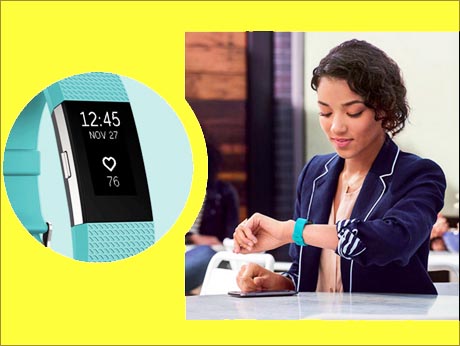
Fitness freaks fuel a galloping growth of wearable devices in India
Bangalore, September 10 2016: When Indians determine that something is good for them -- and good value -- they go for it with an enthusiasm that often takes the industry by surprise. Wearable technology is a case in point.
Latest numbers released this week by analysts International Data Corporation, indicate that the growth of the market for wearables in India is among the fastest in the world -- almost 42 percent, compared to a worldwide rate of 26.1 percent during the same period, the second quarter of 2016.
Buyers here share the global preference for health-related devices like fitness trackers over other wearables like smart watches or safety bands. Indian buyers of wearables confirm their reputation as canny customers: they shun costly products and overwhelmingly go for health bands costing Rs 3500 or less. Since online sellers offer the best deals, they are able to scoop up almost 80 percent of Indian business in wearables. We also buck the global trend and go for local brands: the number one position in India with 16.1 percent market share is the desi health wearable Goqii which sells more units in the corporate sector compared to lay consumers ( See our Product review on the latest Goqii 2 version).
The Chinese company Xiaomi holds the second position with 10.3 percent share in India, followed by Fitbit the global number one which managed 6.7 percent. Other brands which sell in India are Garmin ( 1.4 percent) and Huawei ( 1 percent). All these brands put together account for only 35.5 percent or just over a third of all wearables sold in India... the other 2/3rd of the sales are ratched up by unbranded or unorganised brands. This is a situation very similar to that which prevailed in the early years of the personal computer when Indians uniquely put their faith and money in unbranded and assembled PCs.
In a separate study of the global wearables scenario, IDC finds that while basic wearables like health bands grew briskly to account for nearly 83% of all sales, so called 'smart' wearables are actually in decline. Fitbit is the undisputed champion of the global maidan, accounting for 25.4 percent or just over a quarter of all sales in the April- June 2016 period. It is followed by Xiaomi with 14 percent and Apple comes third with 7 percent.
The upcoming festive season in India is expected to provided a big boost to the more affordable wearables -- since they make good gifts. But the IDC report hints that Indians are a choosy lot. They are not thrilled with negative aspects of many health bands -- poor battery life, low accuracy and lack of 'killer' features. This is both challenge and opportunity for India-based industry. They can take up the challenge thrown by the consumer and create truly paisa vasool products-- or fall by the wayside.
________________________________________________________
FITBIT CHARGES AHEAD
Launched globally last week, the Charge 2 is 4 times bigger
Fitbit is the worldwide leader in health tracking bands. At the IFA
consumer electronics show in Germany last week, the company
launched the new edition of its Charge health band
Charge 2 is four times larger than the first version, but Fitbit feels it can
get away without making the band touch sensitive. A single button
is provided to cycle through all menu options. like number of steps,
heat rate, stopwatch mode etc. The display is larger and crisper.
A new introduction is Cardio Fitness -- using information like age,
gender, weight and heartrate to give you a cardio score. Another is
a feature called Relax that hlps you do a short breathing. Charge 2
was launched internationally at $149 and is described on Fitbit's
India site but no India pricing yet.
-----------------------------------------------------------------------------------------------